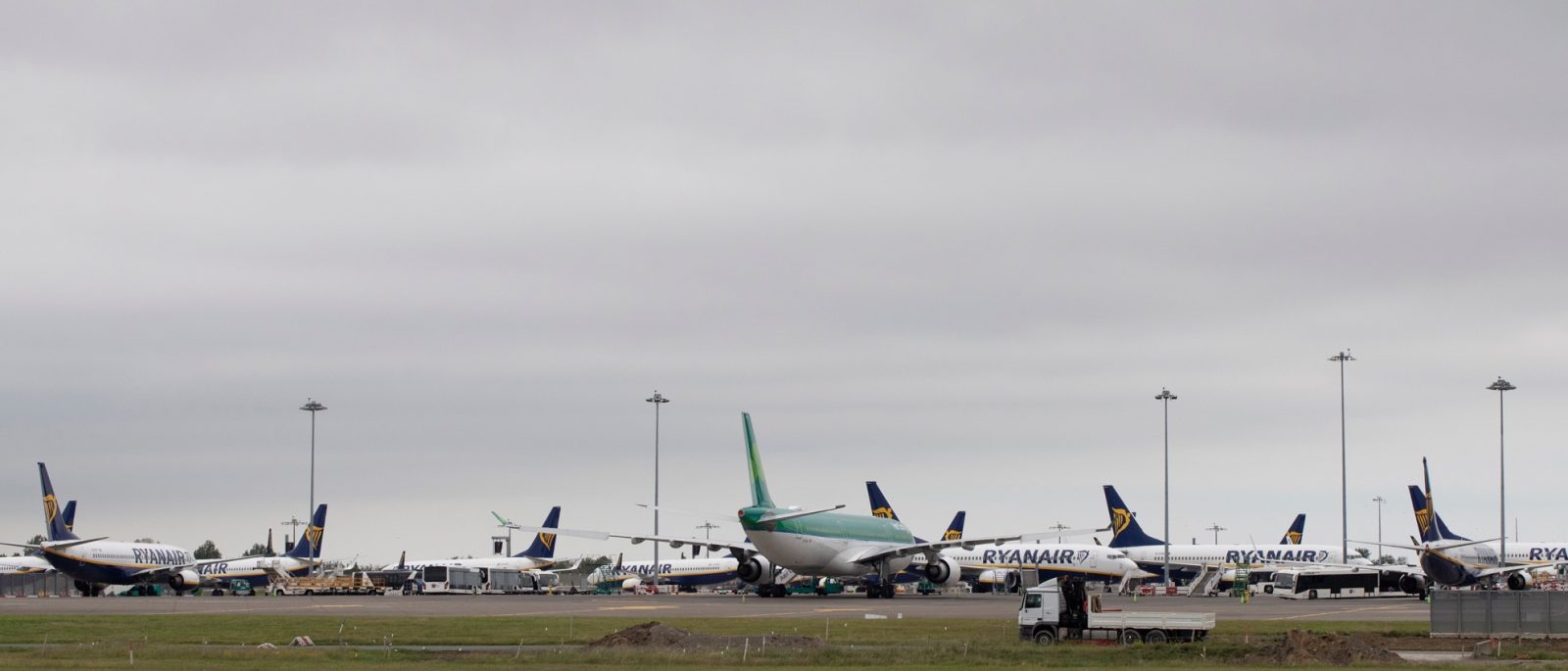
Officials in Ireland have earned plaudits over the years for encouraging new technologies as drivers of innovation and economic growth, but they aren’t getting any applause for their perplexingly sluggish response in dealing with a series of drone sightings that have disrupted traffic at Dublin Airport, causing multiple flights to be redirected.
Dublin Airport’s latest closure by drone intrusions occurred last Thursday, when a late afternoon sighting halted departing airline flights for about a half hour and caused several incoming planes to be diverted. It marked the sixth UAV-provoked disruption in less than two months that created delays for outbound travelers, and forced passengers aboard arrivals rerouted to Belfast or Shannon to make the respective 135 km and 196 km commutes back to Dublin by road.
One estimate put the number of people adversely affected by Thursday’s suspension alone at 200,000.
Read: Manna drone delivery CEO Bobby Healy discusses EU, US expansion
As is the case with most major global airports, the airspace around Dublin is tightly restricted, with drone flights banned within five km of the facility.
Unlike a large number of international aviation hubs, however, Dublin Airport’s anti-drone system appears to be an ill-adapted hodgepodge of assets that doesn’t include the key ability to quickly neutralize UAVs once they’ve been detected – and before they force traffic suspensions.
Part of that mix are employee eyeballs airport officials also rely on to catch sight of small and fast-moving craft that tech picked up. The significant detection role of eminently fallible human vision has caused some critics to speculate the recent spate might have been a repeat of the infamous 2018 seen-but-never-found drone reports that shuttered London’s Gatwick airport for over two days.
The regular recurrence of drones spotted at Dublin Airport has, however, somewhat undercut suspicions they were entirely imagined. But that repetition has also caused airlines like Aer Lingus and Ryanairpenalized by flight suspensions to lose their patience with what they see as inexcusable dithering by both operators and government authorities to halt the intrusions.
Read: Bill expanding drone use by Ireland’s police expected later this year
Since full anti-drone detection, identification, and neutralization platforms by companies like DeDrone, De-Fend, and Apollo Shield are in use elsewhere, detractors like Ryanair CEO Michael O’Leary can’t believe they haven’t already been rushed into place in Dublin as well – even if that requires post-facto passage of legislation to authorize airport authorities to take invading UAVs out.
“Most European airports – Gatwick, Heathrow, Stansted, Schiphol – all have anti-drone technology,” the ever fiery O’Leary told broadcaster RTÉ following Thursday’s disruptions. “This is completely unacceptable. Dublin Airport is the only major EU airport that for six times in the last six weeks has been shut by illegal drone activity… (Anti-drone tech is) not expensive. It costs about €100,000 ($106,320) and it is operated by airport police.”
In response, Irish Transport Minister Eamon Ryan swapped earlier assurances that efforts to improve counter-drone activities shared by Dublin Airport operators , Ireland’s police, and government authorities were being made with a promise to take steps to acquire full-range anti-UAV tech.
Read: Ireland prosecutes, convicts its first rule-breaking drone pilot
In doing so, however, he added a qualifier – certain to enrage O‘Leary and others – that the government’s anti-drone system shopping and deployment actions won’t be much speedier than its response to the intrusions has been thus far.
“We need to make sure we get the right equipment and get the best defensive capability and make sure we do it in a way that protects passengers, protects people living close to the airport, and that we have the ability to prosecute people who are then caught and punish them accordingly,” Ryan said in a sentence suggestive of just how endless that process may be. “It will take a number of weeks. It won’t be instantaneous.”
FTC: We use income earning auto affiliate links. More.

Comments